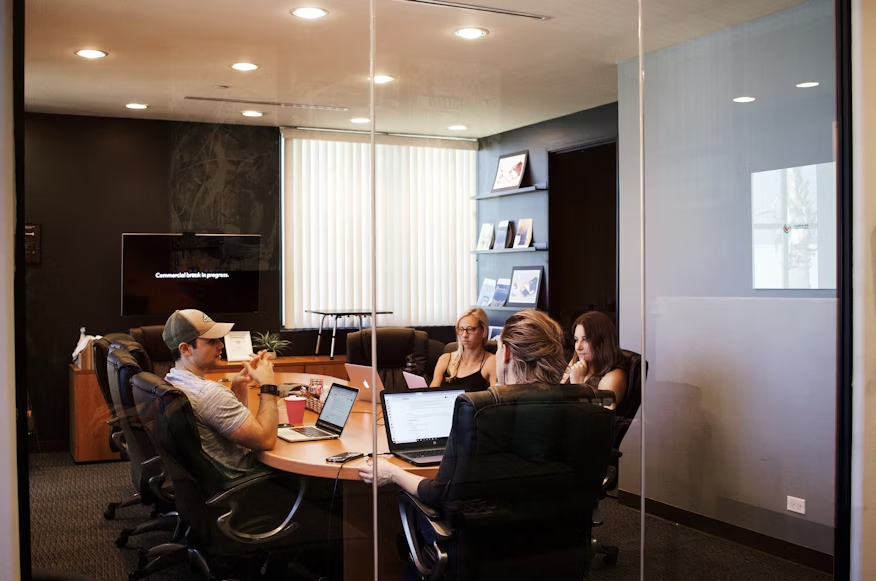January 1, 2025 – As the United States enters the new year, a profound shift in workplace culture is unfolding across the country, with an increasing number of American workers and companies adopting a hybrid work model. The trend, which gained momentum during the COVID-19 pandemic, is now becoming the dominant approach to work in 2025, as both employees and employers seek a balance between flexibility, productivity, and in-person collaboration.
According to recent surveys, over 60% of U.S. workers now report that their companies are offering some form of hybrid arrangement—allowing them to split their time between home offices and traditional workplace settings. This marks a significant increase from 2023, when only 45% of workers had access to hybrid work options. The trend shows no signs of slowing, with experts predicting that by mid-2025, the majority of U.S. workers will be operating in hybrid environments.
The shift is largely driven by employees’ growing demand for work-life balance, coupled with the realization that remote work can often be just as productive as working in an office. For many, the ability to work from home part of the week has led to improved mental health, increased time spent with family, and a better overall sense of well-being. At the same time, employees also acknowledge the importance of in-person interactions for team building, collaboration, and maintaining company culture.
“Hybrid work is the future,” said John Matthews, a workforce analyst at Urban Strategies. “The data is clear—workers want flexibility, but they also recognize the value of face-to-face interactions when it comes to brainstorming, problem-solving, and maintaining a sense of community in the workplace. Companies are realizing that hybrid models are not just a perk, but a strategic advantage.”
Employers, in turn, are finding that offering hybrid work options can help attract and retain talent in an increasingly competitive job market. In particular, companies in tech, finance, and consulting sectors have embraced hybrid models as part of their efforts to stay competitive and appeal to younger workers, who have increasingly come to expect remote work options.
A growing number of large corporations are implementing flexible policies that allow employees to choose which days they come into the office. These policies are designed to provide the autonomy workers crave while still maintaining a structured environment. For example, a prominent tech company announced that employees can work from home up to three days a week, with designated office days focused on collaborative projects and team events.
However, while the hybrid model is gaining traction, it is not without its challenges. Companies are grappling with how to effectively manage remote workers, ensure clear communication, and foster inclusivity among employees who are working in different locations. There are also concerns about the long-term effects of remote work on innovation, as well as the potential for employee burnout from blurred work-life boundaries.
To address these concerns, many businesses are investing in digital tools and technologies that facilitate remote collaboration, such as virtual whiteboards, AI-driven project management software, and digital meeting platforms. These tools are helping companies bridge the gap between remote workers and office-based employees, ensuring that all team members have access to the same resources and opportunities for engagement.
“The key to success in a hybrid work environment is maintaining strong communication channels and ensuring that employees feel connected regardless of where they’re working,” said Lisa Harper, a business consultant. “Companies that embrace this model successfully will be those that invest in both the right technology and the right culture—one that values flexibility, collaboration, and accountability.”
The growing adoption of hybrid work is also having a ripple effect on the broader U.S. lifestyle. With fewer people commuting to office jobs every day, urban areas are seeing a shift in foot traffic, and real estate trends are evolving. Suburban and rural areas are experiencing a renaissance, as more workers choose to live in locations with a lower cost of living, while still maintaining professional connections through remote work. Meanwhile, commercial real estate markets are shifting, with demand for office space declining in major cities while demand for flexible, shared office environments continues to rise.
As the hybrid work model continues to evolve in 2025, it is reshaping not just the American workplace, but also the way people live and interact with their communities. With its mix of flexibility and structure, hybrid work has become more than just a trend—it’s a fundamental shift in how work fits into the modern American lifestyle. As companies and workers continue to refine the balance, 2025 promises to be a year of even more transformation in the way Americans approach work and life.


